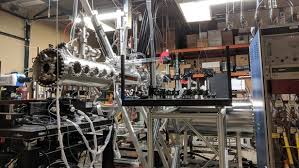
Breaking News
 $26M Frozen on Blockchain - With One Click
$26M Frozen on Blockchain - With One Click
 Italy are on national strike shutdown rejecting digital enslavement...
Italy are on national strike shutdown rejecting digital enslavement...
 The following U.S. states are currently using the rebranded "Reporty Homeland Security" so
The following U.S. states are currently using the rebranded "Reporty Homeland Security" so
 NATO Chief Urges Europe To Prepare For Long-Term World War With Russia, China, Iran & North Korea
NATO Chief Urges Europe To Prepare For Long-Term World War With Russia, China, Iran & North Korea
Top Tech News
 HUGE 32kWh LiFePO4 DIY Battery w/ 628Ah Cells! 90 Minute Build
HUGE 32kWh LiFePO4 DIY Battery w/ 628Ah Cells! 90 Minute Build
 What Has Bitcoin Become 17 Years After Satoshi Nakamoto Published The Whitepaper?
What Has Bitcoin Become 17 Years After Satoshi Nakamoto Published The Whitepaper?
 Japan just injected artificial blood into a human. No blood type needed. No refrigeration.
Japan just injected artificial blood into a human. No blood type needed. No refrigeration.
 The 6 Best LLM Tools To Run Models Locally
The 6 Best LLM Tools To Run Models Locally
 Testing My First Sodium-Ion Solar Battery
Testing My First Sodium-Ion Solar Battery
 A man once paralyzed from the waist down now stands on his own, not with machines or wires,...
A man once paralyzed from the waist down now stands on his own, not with machines or wires,...
 Review: Thumb-sized thermal camera turns your phone into a smart tool
Review: Thumb-sized thermal camera turns your phone into a smart tool
 Army To Bring Nuclear Microreactors To Its Bases By 2028
Army To Bring Nuclear Microreactors To Its Bases By 2028
 Nissan Says It's On Track For Solid-State Batteries That Double EV Range By 2028
Nissan Says It's On Track For Solid-State Batteries That Double EV Range By 2028
Nuclear fusion breakthrough breathes life into the overlooked Z-pinch approach

Tokamak reactors and fusion stellarators are a couple of the experimental devices used in pursuit of these lofty goals, but scientists at the University of Washington (UW) are taking a far less-frequented route known as a Z-pinch, with the early signs pointing to a cheaper and more efficient path forward.
In order to mimic the conditions inside the Sun, where hydrogen atoms smash together to form helium atoms and release gargantuan amounts of energy with no harmful by-products, we need a whole lot of heat and a whole lot of pressure.
Forming a stream of plasma and holding it in place long enough for these nuclear reactions to occur, either in a twisted loop or a neat donut shape, are the techniques employed by devices like Germany's wonky Wendelstein 7-X fusion reactor and China's Experimental Advanced Superconducting Tokamak. But this approach has its drawbacks, relating to the magnetic coils needed to suspend the ring of plasma, as study author Uri Shumlak explains to New Atlas.

 Carbon based computers that run on iron
Carbon based computers that run on iron

